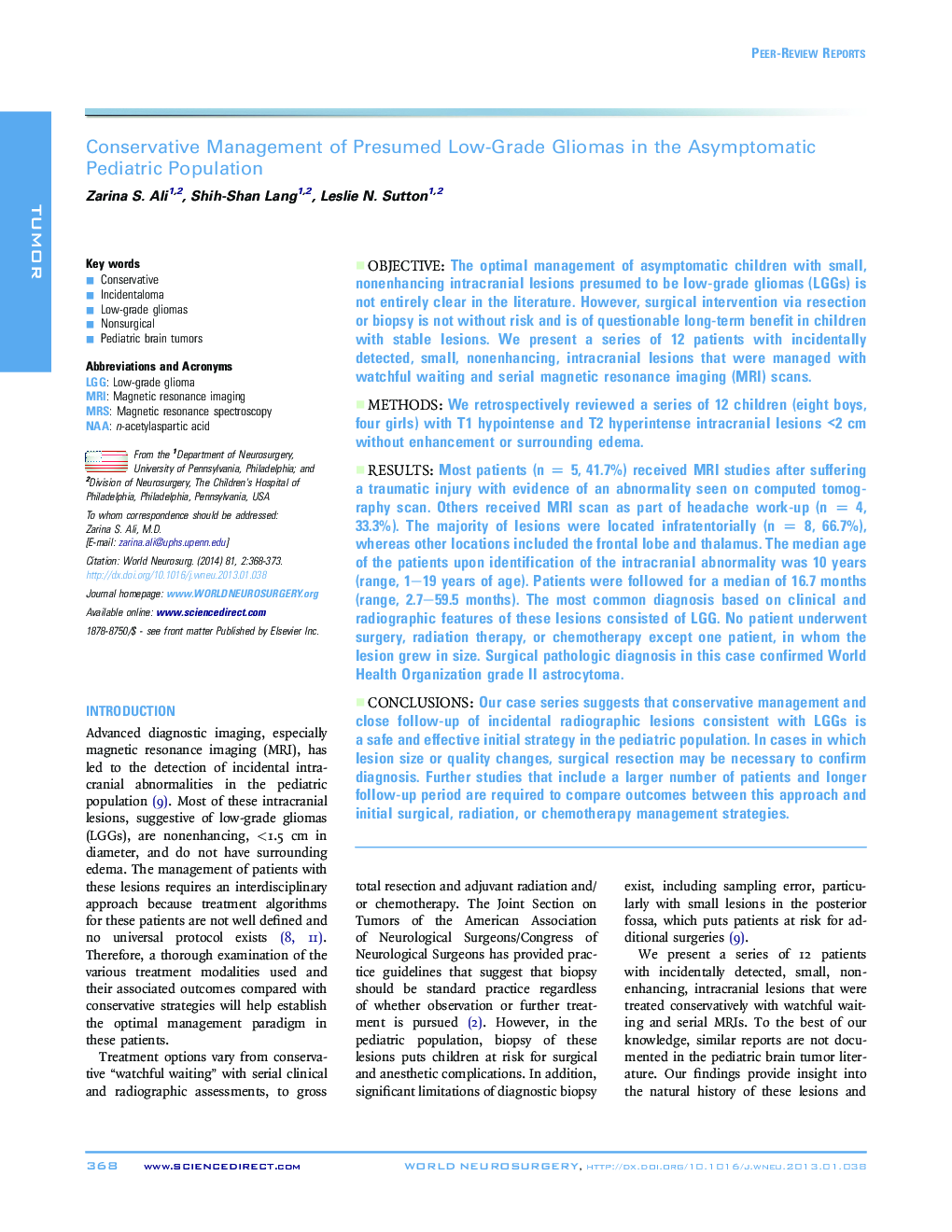| Article ID | Journal | Published Year | Pages | File Type |
|---|---|---|---|---|
| 3095729 | World Neurosurgery | 2014 | 6 Pages |
ObjectiveThe optimal management of asymptomatic children with small, nonenhancing intracranial lesions presumed to be low-grade gliomas (LGGs) is not entirely clear in the literature. However, surgical intervention via resection or biopsy is not without risk and is of questionable long-term benefit in children with stable lesions. We present a series of 12 patients with incidentally detected, small, nonenhancing, intracranial lesions that were managed with watchful waiting and serial magnetic resonance imaging (MRI) scans.MethodsWe retrospectively reviewed a series of 12 children (eight boys, four girls) with T1 hypointense and T2 hyperintense intracranial lesions <2 cm without enhancement or surrounding edema.ResultsMost patients (n = 5, 41.7%) received MRI studies after suffering a traumatic injury with evidence of an abnormality seen on computed tomography scan. Others received MRI scan as part of headache work-up (n = 4, 33.3%). The majority of lesions were located infratentorially (n = 8, 66.7%), whereas other locations included the frontal lobe and thalamus. The median age of the patients upon identification of the intracranial abnormality was 10 years (range, 1–19 years of age). Patients were followed for a median of 16.7 months (range, 2.7–59.5 months). The most common diagnosis based on clinical and radiographic features of these lesions consisted of LGG. No patient underwent surgery, radiation therapy, or chemotherapy except one patient, in whom the lesion grew in size. Surgical pathologic diagnosis in this case confirmed World Health Organization grade II astrocytoma.ConclusionsOur case series suggests that conservative management and close follow-up of incidental radiographic lesions consistent with LGGs is a safe and effective initial strategy in the pediatric population. In cases in which lesion size or quality changes, surgical resection may be necessary to confirm diagnosis. Further studies that include a larger number of patients and longer follow-up period are required to compare outcomes between this approach and initial surgical, radiation, or chemotherapy management strategies.
